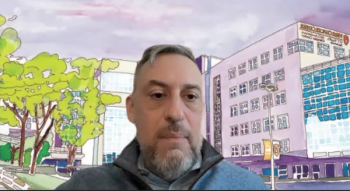
Diversifying the Workforce and Centering the Patient in the Future of Health Care: Eboni Price-Haywood, MD, and Toni Flowers, PhD
Meaningful transformation in health care requires ongoing, collaborative efforts, explained Eboni Price-Haywood, MD, MPH, MMM, Xavier Ochsner College of Medicine; and Toni Flowers, PhD, DHL, MBA, LCMC Health.
Eboni Price-Haywood, MD, MPH, MMM, associate dean at Xavier Ochsner College of Medicine, and Toni Flowers, PhD, DHL, MBA, chief diversity and social responsibility officer at LCMC Health, highlighted the critical need to invest in and diversify the entire care team, while also stressing that health care services must be intentionally designed around the specific needs and understanding of the communities they serve.
Price-Haywood and Flowers express that meaningful transformation takes time and requires the collaborative efforts of diverse teams, including the patient, to comprehensively address health issues and meet patient-defined needs.
This transcript was lightly edited for clarity; captions were auto-generated.
Transcript
What are some of the biggest takeaways you hope attendees walked away with after engaging with these panels?
Price-Haywood: There are 2 things. One is that we do need to invest in the workforce—to diversify the care team—and although we traditionally think of physicians and nurses, there are others who are equally important, if not more important, to the long-term care to patients. We have to look at what's necessary. What are our training programs that we have locally? Are we able to recruit people, if not locally, from out of state? Are we able to recruit people here who can fulfill those different roles? We do have to pay attention to that, and hopefully those that are present will understand the role that they play in workforce development and also retention within their state.
The other piece of it has to do with once you are operating a health care facility or a clinic or a hospital system, how you design your services really needs to be centered around the people that you serve. That means that you have to understand the community that you're a part of, and you also have to understand who's walking through the door. You have to be in tune with them to design the services to meet their needs; otherwise, you're present, but not present if you're not meeting the needs of the community where you're located.
Flowers: I think transformation is one of the biggest things, and transformation doesn't happen quickly. These conditions that we're dealing with developed over time, and so it's going to take time.
I want to make sure that folks are encouraged to know that, as it was told to me, sometimes you feel like what you're doing is just a drop in a bucket, but it takes every drop to fill that bucket. The importance of recognizing that, as we have teams that are working together, collaboratively, where the patient is in the center. The patient is also considered a part of the team; we're all bringing our different perspectives in and thereby have a comprehensive way that we're approaching our patients' health issues to be able to meet the needs that [they] deem as important to them.
Newsletter
Stay ahead of policy, cost, and value—subscribe to AJMC for expert insights at the intersection of clinical care and health economics.







































